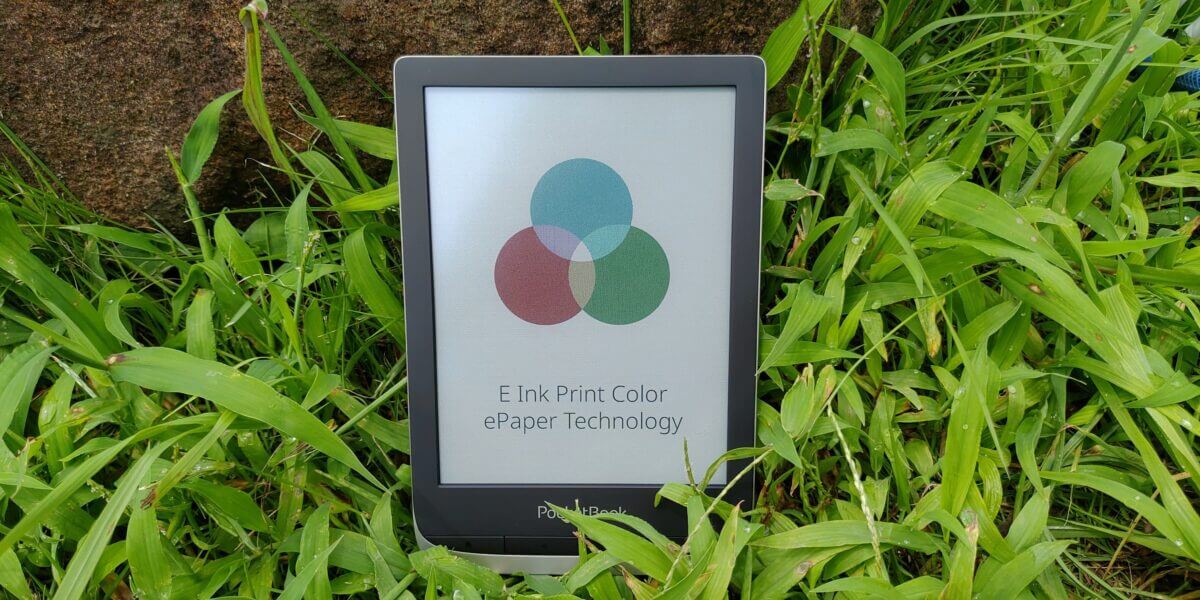
The history of E INK color e-paper dates back to 2009, when the first wave of Triton devices hit the scene. The vast majority of devices that were released between 2009 and 2012 were expensive and did not sell well. E INK developed new color e-paper in 2020 and a slew of new e-readers and smartphones brought color back in a big way. Today, we are going to look at the history of color e-paper and give you a sense on how it was developed, the devices that were issued and where do we go from here.
E INK Triton 1 – E INK developed Triton 1 e-paper in 2009 and was released in November 2010, is the third generation of E Ink Vizplex displays: a color display that is easy to read in high light. The Triton is able to display 16 shades of gray, and 4,096 colors. The module is comprised of a TFT backplane, Ink layer, glass based-Color Filter layer and Protective Sheet. This technology just won the coveted Wall Street Journal 2011 innovation award. Triton 1 devices utilized the Epson controller S1D13524 is a high-performance EPD controller with a built-in color processor that enables seamless integration of color e-paper displays into a variety of devices.
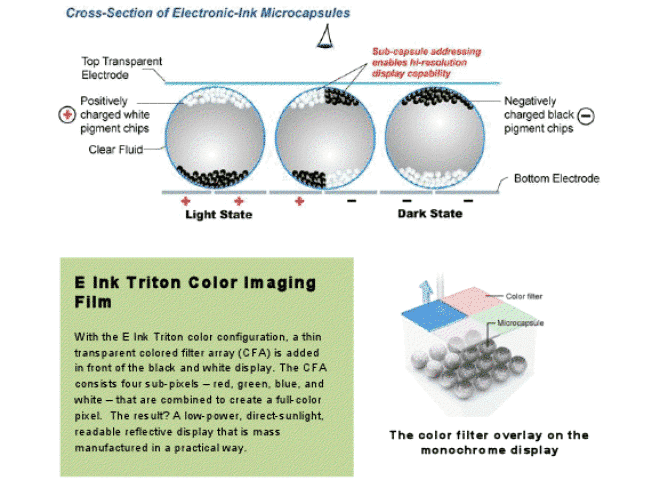
A full color pixel represents 4 E Ink pixels which would reduce the full resolution by 2x in each direction but the controller is capable of subpixel-dithering to improve the apparent resolution.Triton 1 had a grid of 2×2 pixels, red, green, blue, and white and used a square color filter array. Many people are confused about the sub pixel-dithering. On a 9.7″ screen this has 600 pixels across the screen and 800 pixels down the screen. However darkening a single subpixel will turn that subpixel to black no matter what color it is supposed to be thus, you can see that black lines could be at a resolution of four times the color resolution (1200 x 1600). However this is not the case for white. To get white you need all three colors turned on full and the white subpixel will improve the contrast making the screen whiter. If you are using two sub pixels as shown in the horizontal black line for black then the remaining two subpixels cannot produce a while area beside above it.
Note that the production controller is designed to not permit a full black from any of the color subpixels even if turned down completely. Instead the controller interprets a full black on the white subpixel to force the entire pixel (all four subpixels) to full black while a similar white subpixel set to full white will force the entire pixel to full white. However anti-aliasing can still be used on pixels that touch the white or black pixel to set single subpixel to smooth the edges for a diagonal line.
The first wave of Triton 1 e-readers had large 9.7 inch displays, such as the Hanvon color e-reader and cost $440.JetBook Color made by Ectaco, which cost $499 and PocketBook Color Lux made by PocketBook.
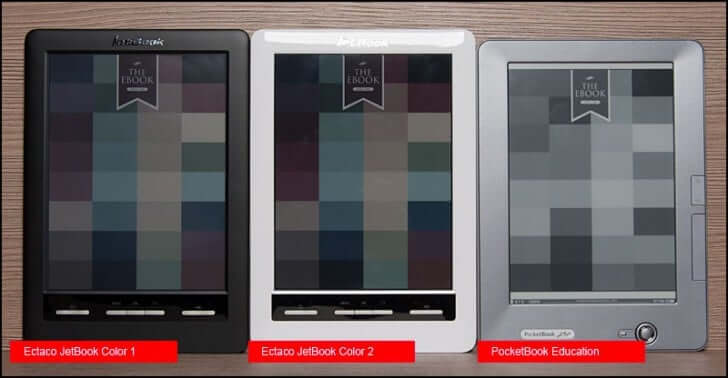
E INK Triton 2 – This technology was refined and released in 2012. The fundamentals of the screens and array were more or less the same. The only thing that changed was instead of using square pixels it is using rectangular. This provided 4096 degrees of color with 16 levels of each. Triton 2 also supports front-light technology, which comprised of LED lights on the bottom of the bezel, that projects light evenly across the screen. This was designed to solve the dithering issue with Triton 1, where blacks and whites were not as pronounced.
There were very few e-readers that took the risk with this technology, because the color panels and system were still horrendously expensive. Ectaco released the Jetbook Color 2 for $599 and Pocketbook Color Lux for $300.
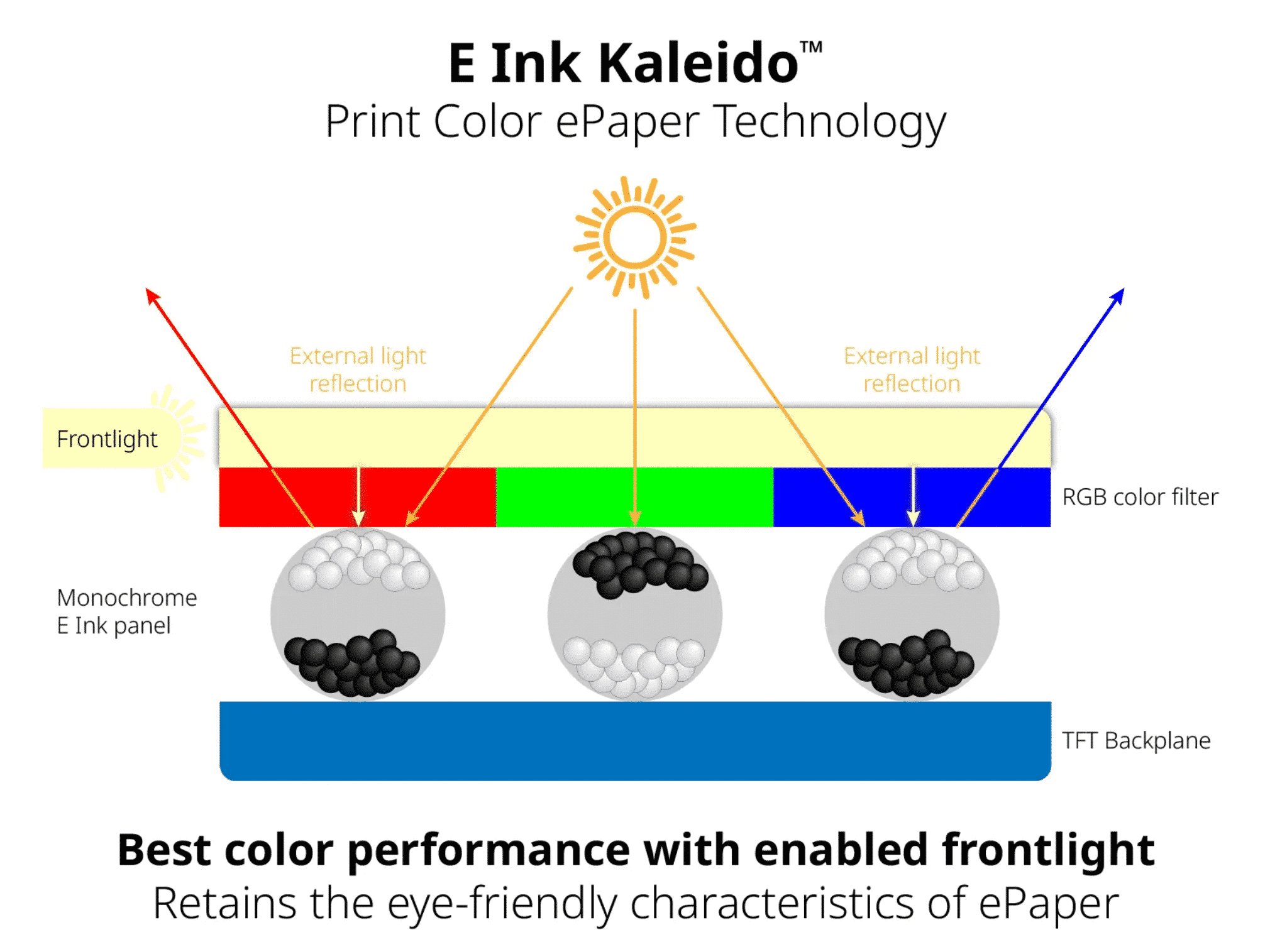
E INK Kaleido – After the commercial failure of Triton 1 and 2, E INK took a six year break from color e-paper and instead focused on developing their Regal Waveform controllers, developed E INK Carta and Carta HD and made better front-light technology. All of these enhancements set the stage for the next great revolution of color displays. After 2 years of research, E INK unveiled Kaleido in 2019.
Kaleido utilizes a new printed Color Filter Array (CFA) technology in conjunction with E Ink’s second generation, faster and brighter, Carta 1100 ink. The new printing process alleviates the need for a glass-based CFA, making the displays thinner and lighter than previous generations, while simultaneously having higher optical quality. It is important to note that this can be used on glass displays and also non-glass based displays.
This technology allows e-reader companies to combine the power of traditional black and white displays with color for a more fully realized ebook shopping experience. In addition, E Ink’s faster ink enables quicker updates for animations and video. The CFA can produce color for each pixel that is displayed on the screen. This includes red, green, blue, black or white. Colors can be combined to give you different colors or shades. The way it works is if you want light blue, blue will be toned down and white will be brighter. If you want orange, then yellow and red would be blended. It will ultimately display over 4,096 different color combinations.
E INK has told Good e-reader about the grayscale and color system. “This is simplest way to think of it. The B/W ePaper module is capable of producing 16 grayscale which is 2^4. E Ink Kaleido is CFA comprised of RGB. Each of the RGB has 16 levels of intensity and so 2^4 x 3 = 4096 colors.”
Prior iterations of E INK Color e-paper only had square or rectangles to display colors. They basically just displayed colors, which again made blacks and whites look washed out. Kaleido basically shows color on the pixel level, which basically doubles the amount of colors that can be shown. Also, Kaleido works with the E INK Carta HD system. So you can read a B&W ebook on a six inch e-reader at 300 PPI, and color images will be displayed at 100 PPI.
Kaleido is not just fun and games, but there are some fundamental problems with the technology. The color filter array always being on, which creates some problems with the ebook reading experience. A typical six inch color e-reader will have an E INK Carta and a E INK Color layer. An ebook will be able to display text based fonts at 300 PPI, but the background is different than a typical B&W e-reader, such as the Amazon Kindle. A Kindle will have a pure grey background, a color e-reader with a pure black font. This is because a typical E INK screen will have black and white particles that are charged, black ones will be the text and white/black will create greys. A color e-reader that employs a CFA will have background colors as a gradient, the background will never be grey. This is because the color filter array produces colors in a small hexagons, since these are larger than individual pixels, you will see discoloration of the background. If you could turn the color filter array off in ebooks, or give a user an option to disable color, this would be great, but this is currently impossible to do. You also need to have the front-lit display always on, unless you are in a bright room, or else the colors will appear dark.
A ton of companies took the risk of releasing products using Kaleido color e-paper. The Hisense A5C and Hisense Pro CC were the first Android enabled smartphones to use a color E INK screen. A bunch of Chinese companies also gambled on the tech, such as the iFlytek C1 and the iReader C6. Pocketbook got back into the color game and had their most successful e-reader in over six years, the Pocketbook Color. Onyx Boox also developed their first color e-reader, the Poke 2 Color. One of the big advantages of the second wave of modern color e-paper was the price. The hisense smartphones were just over $200, the Pocketbook Color was selling at $199, and the iReader C6 and iFlytek C1 were around $300, while the Poke 2 Color is $279. These prices resonated with customers, they were affordable enough to buy and not feel guilty, whereas the Triton 1 and Triton 2 devices were normally double or triple the price.
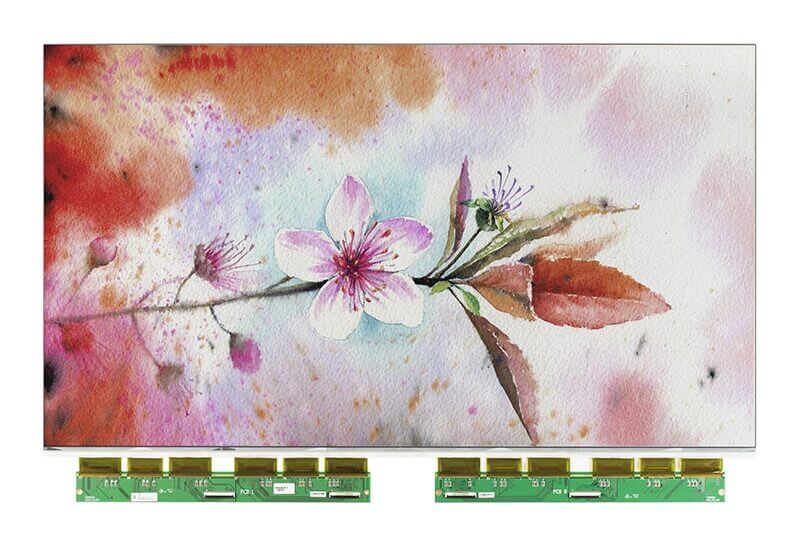
E INK Kalideo 5100 – Since Kaleido was such a huge success, E INK is doubling down on color e-paper and hoping to attract more companies to release new products in 2021. What does this new technology bring to the table? Companies are able to use a layer of glass, as well as non-glass based displays. The refresh rate on color will be as fast as B&W e-paper. There will be improved color and contrast performance and reduced graininess. E INK did tell me that ” Our formal product launch has not yet occurred, so we are not publishing full specs out at the moment. In general, we are improving contrast and color saturation, also reduced graininess. We are also updating our front light solution, making improvements to the CFA print pattern, and adjusting waveforms.” Kalideo 2 is designed for 5.84 inch devices, all of the way up to 10.3
E INK is expanding their factories to produce more color screens in Taiwan and the United States. There were times during 2020, that they were completely sold out of screens, the demand was so high. So they don’t want to have this problem again. Exact specs of the new screen tech are unknown, but we should see even more new e-readers and digital note taking devices get released in 2021 and 2022. It will change the game to be able to draw in color on large displays. Ultimately, Amazon, Barnes and Noble, Kobo, Onyx Boox, Boyue, Sony, Remarkable, Dasung and other companies will adopt their entire product line to use color e-paper.
Michael Kozlowski is the editor-in-chief at Good e-Reader and has written about audiobooks and e-readers for the past fifteen years. Newspapers and websites such as the CBC, CNET, Engadget, Huffington Post and the New York Times have picked up his articles. He Lives in Vancouver, British Columbia, Canada.
